Notices
Hosei's Research Brand Vol. 23] - The Captain of the 63rd Antarctic Research Expedition Speaks on the Activities of the Antarctic Research Expedition to "Keep Watching the Earth" and the Future of Glacial Geology Research (Professor SAWAGAKI Takanobu akaki, Department of Policy Science on SocietyFaculty of Social Sciences )
- July 25, 2023
Hosei's Research Brand" Series
At Hosei University, fascinating and stimulating research is being produced every day that will be the frontrunners in the future of society and the world.
This series of articles and videos will tell the story of Hosei's brand of research.
The experience of hiking in the snowy mountains of my hometown led to a great discovery

I am from a town overlooking the Tateyama mountain range in Toyama Prefecture. Since my childhood, I often enjoyed gathering wild vegetables and climbing streams with my father, who was an elementary school science teacher. With snow-capped mountains so close at hand, it was perhaps a natural progression for me to study glacial geology, the study of the relationship between the icy world and the land, and to become involved in Antarctic research.
My interest in Antarctica was sparked when I saw the movie "Antarctic Tales" in high school. I was so impressed by the Antarctic scenery on the screen that I thought, "Someday I would like to visit Antarctica myself. My high school teacher encouraged me to go on to Hokkaido University. In my hometown, there lived a family famous for mountain guides for a long time. The family had produced five members of the Antarctic Research Expedition, and some of them went on to Hokkaido University and played an active role in the mountaineering club. I wondered if I could follow in their footsteps and get a ticket to Antarctica. With this in mind, I went on to Hokkaido University and joined the university's mountaineering club. When I told a senior member of the club that I wanted to go to Antarctica, he soon introduced me to a number of professors and alumni who had been members of the Antarctic Regional Observation Expedition.
At university and graduate school, he majored in glacial geology, thinking that he wanted to learn something useful for Antarctic observation. At that time in Japan, although there were researchers specializing in both glaciology and geology, it was rare to find a glacial geologist who specialized in both ice and rock. However, because we were a small research community, our professors took good care of us and recommended us for Antarctic expeditions. I took a year off from my studies and entered Antarctica with little prior knowledge of the region, and I had to endure extraordinary hardships. Even so, the days I spent in the beautiful world of ice and snow that I had dreamed of were very moving.
One day during my first Antarctic observation, I discovered a strange terrain. There were traces of what looked like flowing water on the surface. At the time, similar landforms had been discovered in Europe and elsewhere, but only a few researchers thought they were the result of flowing water, and most believed they were the result of ice carving the land. In the extremely cold region of Antarctica, water can only exist in a frozen state, and it was thought impossible for water to flow over the surface of the earth. Even so, I was convinced that these landforms were definitely formed by flowing water. I had been familiar with the mountains and enjoyed climbing streams since I was a child, and it looked just like the traces of rivers I had seen. But where on earth did this water come from...could it be at the bottom of the ice sheet? My doubts only deepened. At that time, communication technology was not as advanced as it is today, and there were limits to what could be done locally. I remember spending my days in Antarctica, isolated from the outside world, with the frustrating feeling of "I can't wait to get back to Japan to catch up with the latest information in this research field and verify my hypothesis.
Thirty years have passed since then. Research has progressed, and we now know that under the Antarctic ice there are several puddles many times the size of Lake Biwa, and that the water flows like a river. In recent years, they have excavated glaciers and successfully filmed underwater beneath the ice using video cameras. The images of living creatures swimming underwater filled me with emotion.
When my paper, which was unsupported at the time, was recognized over time, I felt a sense of joy that I had continued my research and realized once again the depth and interest of my research.
Hints for improving global warming and other problems through the research of observation teams
I have participated in four Antarctic research expeditions. During my first participation in the 1992-94 expedition, I discovered "traces of flowing water" and presented my doctoral dissertation. During my second and third expeditions, I investigated the evidence of water flowing under the ice and where the water was coming from. During the fourth expedition, from 2021 to 2023, he led a team that collected data on the ice shelves, which are ice that extend over the edge of the Antarctic Continent, as result of rising sea water temperatures.
Currently, there is a lot of talk about what will happen if the Antarctic ice melts due to global warming, but the average temperature in Antarctica is about -30 degrees Celsius. If the temperature rises 2 to 4 degrees Celsius due to global warming, as is predicted, it is unlikely that the ice in Antarctica will melt. What is worrisome is that a large amount of water existing in liquid form at the bottom of the ice may suddenly flow out, or that the ocean, whose temperature has increased due to global warming, may melt the Antarctic ice.
In this research, we are also studying the water under the Antarctic ice sheet and how the ice that is being melted by that water will affect the environment in the future. Even though it is difficult to stop global warming itself, we believe that if we can predict these phenomena, we will be able to take some countermeasures in the future.
The observation team also conducts a variety of other surveys and research activities throughout the year. These include aurora and atmospheric observations, penguin population monitoring, and geological studies of the bottom of lakes that appear in the summer. However, cutting-edge research is not always possible. Because of the unique climatic conditions in Antarctica, equipment brought from Japan often does not work well or malfunctions. Because it is a dry land, some precision instruments are damaged by severe static electricity and ore called mica that dances in the wind. It is not uncommon for smartphones to break early after arriving in Antarctica. If this happens, you will spend a year without a smartphone, so you will need a spare. It is a necessity to communicate with your family using apps and other devices.
-
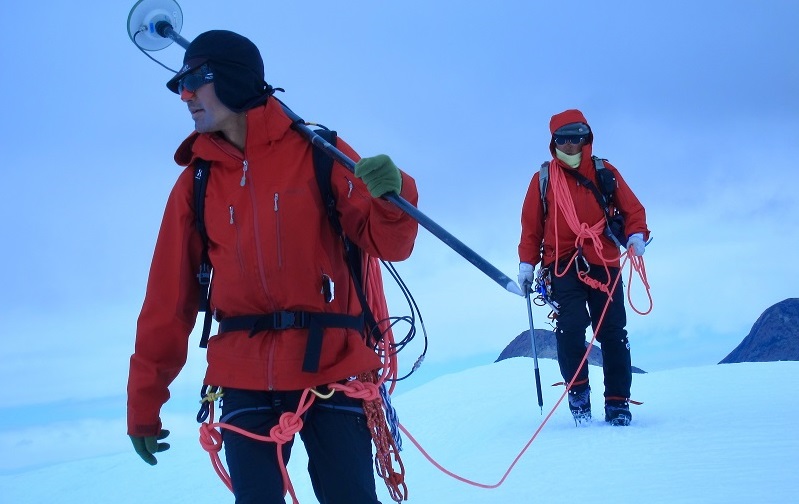
Radar survey to analyze ice thickness and internal structure. At Langhovde Glacier, about 20 km away from Showa Station (Prof. Sawakaki is at the back right)
-
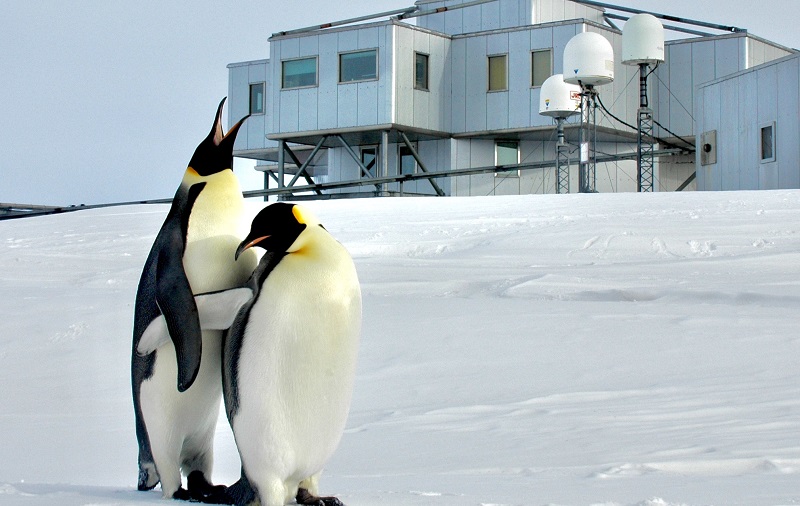
A Steller's sea penguin at Showa Station
Showa Station's primary mission is to "keep watching the Earth
Japan's official participation in Antarctic observation began in 1956. This was the beginning of Japan's participation in the International Year of Earth Observation, an international cooperative project to study the effects of the sun and the earth's magnetism. This project was also an important opportunity for Japan to return to the international community after the war. While the world's powers were embarking on Antarctic observation, Japan was allowed to build a base on land that was marked on maps as "Inaccessible," meaning that it was unreachable. Today, Showa Station is not actually located on Antarctica, but on East Ongul Island, just beyond the sea ice. Other countries thought it was unreachable, but the Japanese of the time defied all expectations and successfully reached the island. The Japanese, however, defied all expectations and successfully reached the island and built Showa Station. This was due to the fact that Japan's shipping technology was more advanced than that of other countries. Japan's technological prowess can also be seen in the prefabricated construction method used for the Showa Base. This sturdy construction method, which could withstand the harsh cold air and wind, quickly became popular in Japan after the Showa base was built.
Japan's strength is not limited to its technological capabilities. The numerous surveys being conducted in Antarctica are "to continue observations on a 100-year basis to observe global climate changes," which requires the continuous collection of data. This is a task that suits the diligent nature of the Japanese people. Here is an example. One of the observation items was "ozone concentration," and the observation team kept measuring the concentration, but there was a time when the value was zero no matter how much they measured. We suspected a mechanical failure, but this was not the case. After further investigation, they discovered that the ozone layer above Antarctica was thinning and a hole (ozone hole) had formed. We discovered that the ozone layer, which absorbs harmful ultraviolet rays from the sun's rays and protects us and our living creatures, was being depleted. That was in 1982. The diligence of the Japanese people led to a discovery that had a major impact on environmental issues.
The role of the Antarctic Regional Observation Expedition is to "keep a constant eye on the Earth. They are a kind of prophylactic medicine, so to speak, that keeps up with steady observation and does not miss any changes. Therefore, the most important objective of the observation team is to keep the observation function of Showa Station uninterrupted. This has been a priority over cutting-edge research for about 60 years and continues to this day.
-
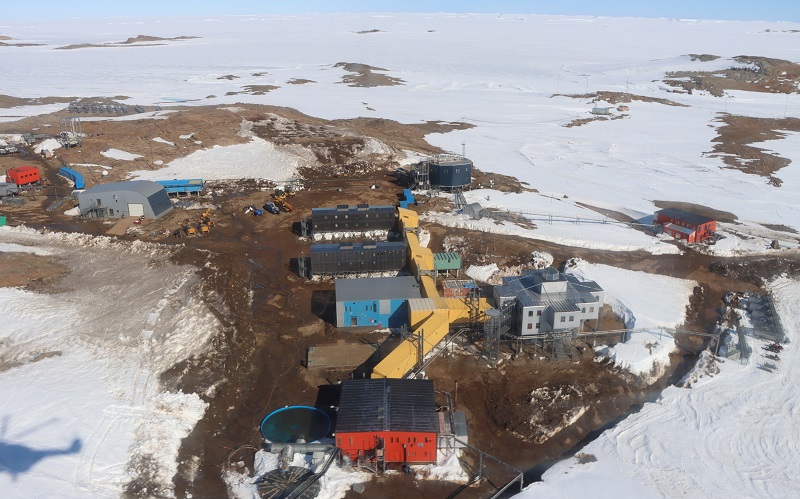
Showa Station in mid-December, when the snow is melting. In Antarctica, the temperature rises to about 0 degrees Celsius in December.
-
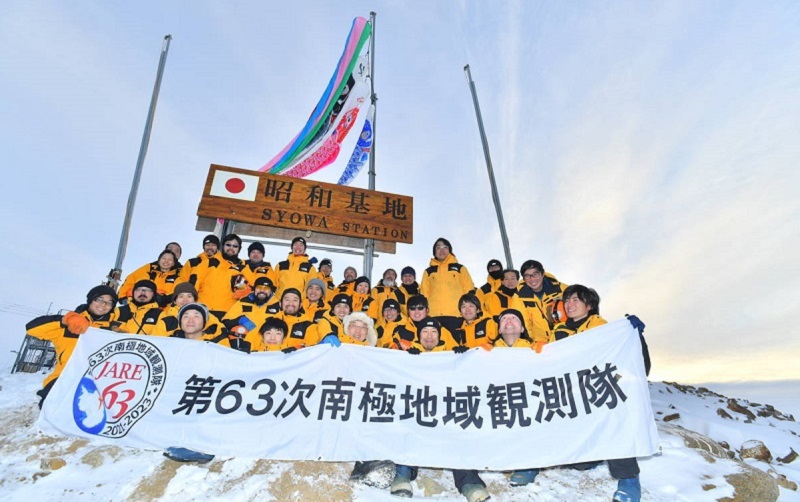
Group photo of the 63rd Antarctic Research Expedition
-
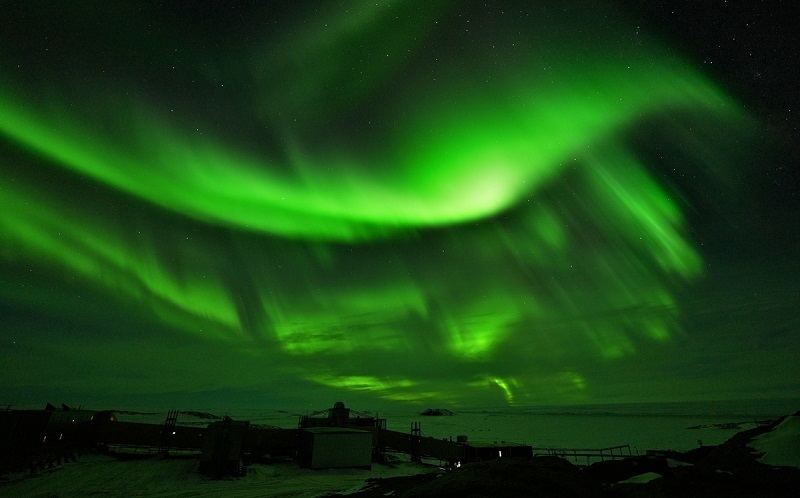
Aurora Borealis seen over Showa Station
-
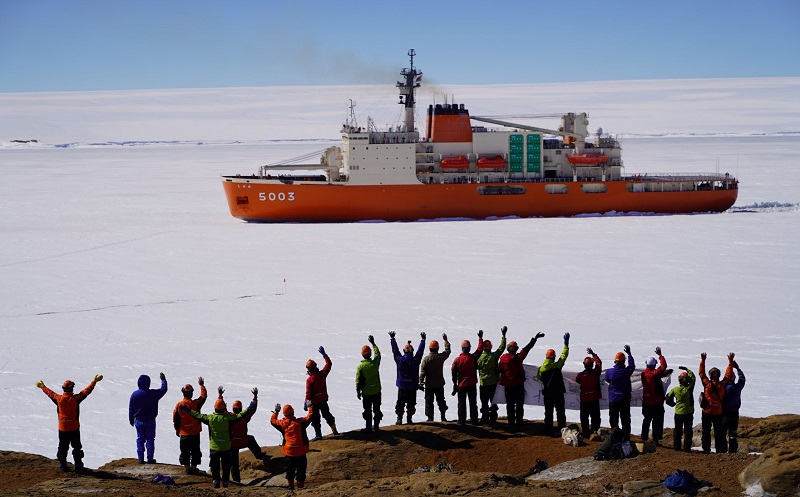
The Antarctic research ship and icebreaker Shirase leaves Showa Station. This is where the 32-member wintering party will begin their isolated life in Antarctica.
Fulfilling the duties of a captain and passing the baton to the next observation team
The major difference between this fourth expedition and the previous three is that I participated as a wintering party leader, not as a researcher. The most important priority of the captain's duties is to ensure the safety of the team members. In Antarctica, a clear day can quickly turn into a blizzard. A mistake could cost lives, so we had to check the weather frequently and make decisions such as "no going out," "stay at the work station," and "no acting alone" in a speedy manner at the appropriate time. They also made sure to take care of the members' physical and mental wellbeing.
Furthermore, a new observation base called "Dome Fuji Observation Base II" was established for the wintering party's activities this time. It is predicted that this base will have glaciers that are one million years old, and the next observation team will excavate to acquire them. No other country has ever drilled into ice as old as this. To build this base, the research team traveled approximately 1,000 km by snowmobile from Showa Station, living in the vehicle during that time. During the construction of the base, the team built a temporary hut and stayed there. The project was completed in about 40 days. It was a lot of work, but we are happy that we were able to safely hand over the site to the next observation team. We are now looking forward to seeing what kind of results we will be able to achieve.
Next time, there is a move to incorporate an underwater robot that will automatically dive under the ice to investigate ocean water quality. We ran the prototype this time, but because the environmental conditions in Japan and Antarctica are quite different, the machine continued to experience malfunctions and difficulties. By reviewing and improving upon the malfunctions this time, we hope to pass the baton to the next generation.
In addition, a plan titled "Antarctic Base Cleanup Operation" is underway to collect various machines and equipment that have been left behind around the base and bring them back to Japan. A new goal has been set to conduct observation activities in a more environmentally friendly manner.
-
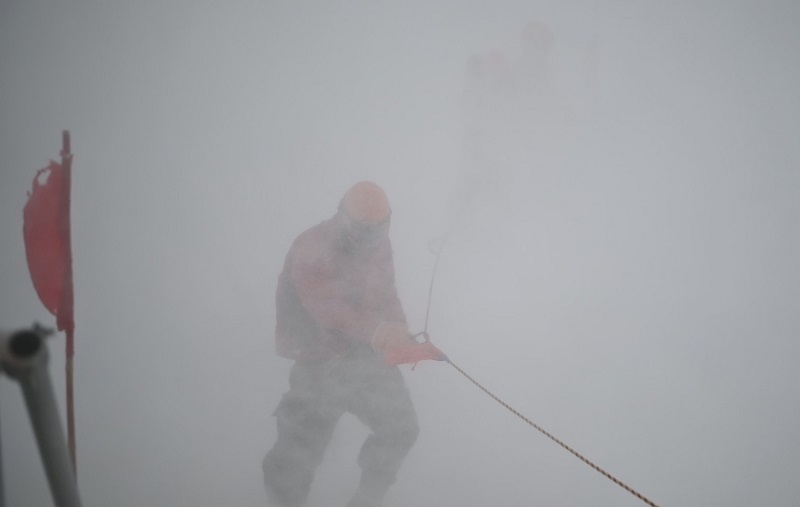
Moving through the blizzard, relying on ropes
-
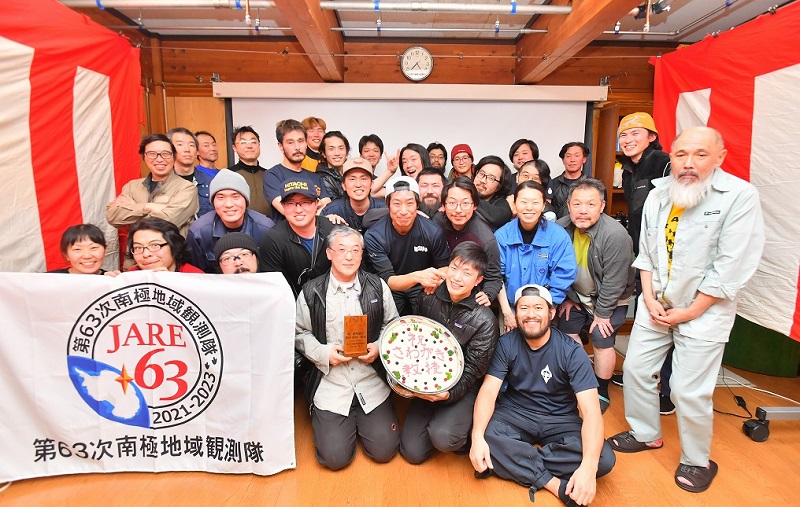
Group photo at the commemorative party held on June 3, 2022 in honor of the 63rd Antarctic Research Expedition. The members of the expedition presented a surprise commemorative gift to Captain Sawakaki.
-
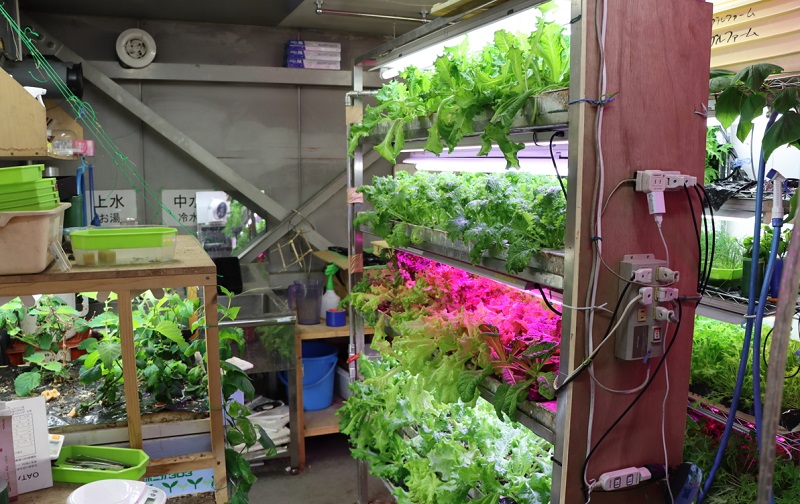
Leafy vegetables grown hydroponically in the green room at Showa Base
-

Mochitsuki (rice cake) pounding event held at Showa Base at the end of the year
Fostering the next generation of leaders through the three activities of education, research, and Antarctic research expeditions
As for our future prospects, we have the following three plans.
First, as a faculty member of the Faculty of Social Sciences, I will continue to provide opportunities for seminar students to hear real stories from people with various experiences. My seminar is titled "Seminar on Exploration and Adventure," and we are participating in an event organized by a network called "Horizon Conference" with the aim of broadening students' perspectives. I expect that students will learn a lot from the opportunity to interact with people they rarely encounter in their daily lives, such as people who have defected from other countries or gone to the North Pole. In fact, some students have actually traveled to the Arctic Circle on the recommendation of Horizon Conference guests. We hope that students will not let "exploration and adventure" remain a dream or a longing, but rather view it as a real-world event and take on a variety of challenges.
Next, we will address the issue of successors, which is a pressing issue. I am sure that I will continue to be involved in the observation team in some form or another, but I feel that it will become increasingly difficult for me to go to the field due to my age. Therefore, we are making efforts to nurture capable young people throughout the research community. Of course, the existence of competent successors is not limited to researchers in glacial geology, but any profession can rely on the existence of competent successors. To go to Antarctica, you need to have a high level of expertise or be able to properly implement the research entrusted to you by other researchers. Since the observation team is a small elite group, they must cooperate with each other in order to carry out their work. Researchers repair generators, cook together on weekends to give the kitchen staff a break, and so on. Since we spend long periods of time in a closed world, we also need to be able to change our moods and control our own mentality. There are many things that are required of us, but I believe that the real thrill of Antarctic observation is being able to experience the magnificent nature of Antarctica and the depth of the bonds that are nurtured because of the small number of people on the team. I hope that many of you will aim to join an observation team.
Finally, we hope that many people will become interested in environmental issues through the outreach (publicity) activities of the Antarctic Regional Observation Expedition. It is said that we are now at a tipping point. Global warming is steadily advancing, but the future we envision will change depending on how much we can curb its progress. This depends on the actions of each and every one of us. For example, in the "Antarctic Classroom," which the observation team conducts for elementary and junior high school students, the team connects Showa Station with elementary and junior high schools, the alma maters of the team members, via an online conference tool to explain their activities in Antarctica and answer questions from the children, sometimes receiving sharp questions about global warming. I want them to understand that the activities of the expedition are not just an event happening in a distant country, but are closely related to their own daily lives and what they are currently learning. I would be more than happy if they can connect this to concrete actions.
-
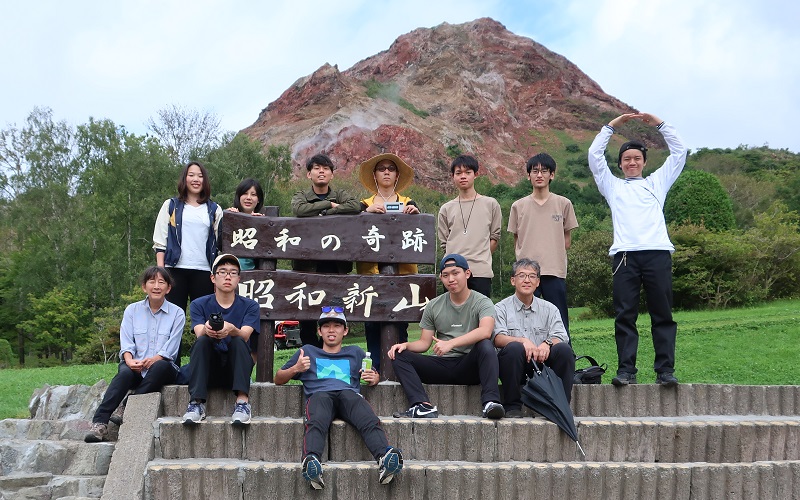
Group photo at the seminar's summer camp (at the Showa Shinzan Geopark in Hokkaido)
-
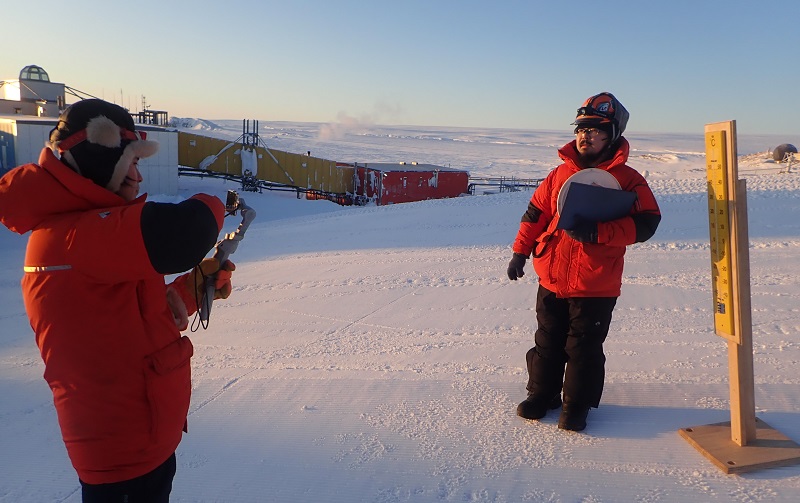
Antarctic classroom conducted via broadcast from Showa Station
Photo of Antarctica courtesy of the National Institute of Polar Research
Related Link
The August/September 2023 issue of "HOSEI," a public relations magazine, introduces Professor Sawakaki's activities and research in Antarctica in an easy-to-understand manner. Please take a look at this article as well as "Episodes of Life in Antarctica" and "Memorable Items from Antarctica" photos.
Professor SAWAGAKI Takanobu akaki, Department of Policy Science on SocietyFaculty of Social Sciences
Graduated from the Department of Geology and Mineralogy, Faculty of Science, Hokkaido University, and completed the Graduate School of Environmental Science, Hokkaido University. D. in Environmental Science. Specialized in glacial geology and natural geography. After working at Hokkaido University, he became an associate professor at Hosei University in 2015 and at the Faculty of Social Sciences 2015 before assuming his current position in 2022. He has participated in four Antarctic research expeditions between 1992 and 2023, and was the first private university faculty member to lead an Antarctic wintering expedition. He is the author of several books, including "A Treasury of Riddles: Antarctica, Reading the Earth One Million Years Ago" (co-authored by Gijutsu Hyoronsha), "Entering the Field (FENICS One Million Fieldworkers Series)" (edited/shared writing, Kokinshoin), and "Natural Geography Encyclopedia" (shared writing, Asakura Shoten). 2014 Paper Award, the Japanese Association for Snow and Ice Research, 2017 Paper Award from the Hokkaido Geographical Society, and the 2023 Award for Distinguished Service to the Antarctic Research Program.

